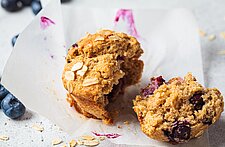By Chef Ron Spaziani
Are vegetables moving from the side to the center of the plate? Looking at current trends, it seems that veggies are taking over… so what’s causing this fast growing change?
Reducing or removing the consumption of meat from your diet is not only good for your heath; it also helps the environment and spreads good karma across the animal kingdom. But adapting to a vegetarian diet is more of a challenge than you may think. It means creating a new dietary program with a nutritionist or a whole lot of will power. It also means no more flame-broiled burgers on the backyard grill or fragrant plates of slow-cooked barbecue, but luckily with the veggie boom, it’s been easier to make the switch over to vegetarianism.
Click HERE to view Vegetables Shine at Starchefs International Chefs Congress
Before one decides to quit meat altogether, it’s important to explore the different types or levels of vegetarianism. Starting from the most restrictive and working our way down, the types of vegetarian are as follows:
Vegan: do not consume any animal products or by-products. Think meat, eggs, dairy, etc. They also do not use animal products such as silk, leather and wool, as well.
Lacto Vegetarian: do not eat red or white meat, fish, fowl or eggs. They do consume dairy products such as cheese, milk and yogurt.
Ovo Vegetarian: do not eat red or white meat, fish, fowl or dairy products. They do consume egg products.
Lacto-ovo vegetarian: do consume dairy products and egg products. This is the most common type of vegetarian.
Pollotarian: do not consume red meat or fish and seafood. They limit their meat consumption to poultry and fowl.
Pescatarian (Pescetarian): While technically not a type of vegetarianism, these individuals restrict their meat consumption to fish and seafood only.
Flexitarian: follow a plant-based diet with the occasional addition of meat. Although this diet has been around for hundreds of years, it has only recently gained popularity.
Flexitarian diets are exactly what they sound like: flexible. Dr. Nancy DiMarco, a longtime flexitarian and the director of the Institute for Women’s Health at Texas Woman’s University in Denton says “I eat meat once a week. When you eat less meat and you add more whole grains and fruits, you’re getting so many health benefits that help you reduce body weight and decrease the risk of cardiovascular disease and diabetes.”
CLICK HERE for more weekly Culinary Trends!
So maybe the flexitarian diet is the reason veggies are all the rage right now, but we’ll never know for sure. What we do know is that veggie based dishes are growing across the country. Untitled at the Whitney in NYC, known for its veggie heavy menu, includes dishes like Cauliflower with cardamom custard and lemon, Maitake mushroom with freekeh and green garlic, and Beets with breakfast radish and mascarpone. Gjelina, located in LA, is another restaurant embracing the veggie boom featuring dishes like Sunshine Kabocha squash curry with wild rice, coconut, kohlrabi with peppers and mint, and Roasted Japanese sweet potato with jalapeno yogurt and scallions.
Personally, my go to vegetable is sautéed broccoli rabe with garlic alongside a nice loaf of Italian bread and my favorite dish to make is braised artichokes simmered with a red wine roasted tomato sauce mixed with cured Italian olives, capers, onions and Asiago.
CLICK HERE to view more Culinary Chronicles from the Symrise Chefs
As you can see, there are endless ways to prepare your favorite vegetables to make them the center of your plate so it’s no surprise that more people are embracing veggies and adapting to the flexitarian/vegetarian diet.
Check out the articles below for more information on vegetarian and vegetable trends!

Flexitarian Diet: Why So Popular With Millennials?

A flexitarian diet, or semi-vegetarian diet, is one that has become very popular with millennials. Phoebe Lapine, a 28-year-old cookbook author, joins Lunch Break With Tanya Rivero to discuss and taste dishes geared toward 20-something cooks. Photo: Getty

Vegan Fare Finds Traction Among Millennials

With the number of plant-based concepts like Native Foods and Veggie Grill steadily increasing, other operators are looking for ways to incorporate meat alternatives into their menus. According to a survey conducted by 210 Analytics, Millennials are increasingly interested in vegan cuisine, and more than 60 percent consume meat alternatives.

Veggies move from side to center of plate

Cara Mangini's grandfather and great-grandfather were traditional butchers. She's taken a slightly different path, carving out a career as a "vegetable butcher." Her passion for produce has taken the California native from New York to Napa Valley to Columbus, Ohio, all in her quest for delicious vegetables.

Flexitarian - Why Being A Part-Time Vegetarian Is Still Better Than Not At All

Alya Mooro | Contributing Writer | Tuesday, 26 January 2016 The Debrief: What is a flexatarian, is it good for you and how do you *actually* do it? I am a carnivore. I love me some meat.

Google Food Trends Report Stuffed with vegan eats

We already know "vegan" is being searched a ton, but which vegan foods are people looking for most? Refinery 29 shares the Google Food Trends Report, which looks at which foods people are searching for most and least.

Meat Analogues: Just Like Your Adventist Mother Used to Make

Wham. Nuti-Loaf. Choplets. FriChik. If you grew up Seventh-day Adventist then you are no stranger to these names. If you did not grow up in and around the Seventh-day Adventist community then you may be scratching your head about now.

Asian flavors shine in vegetable bowl recipes

Lukas Volger is a vegetarian cookbook author I have long admired, ever since he reversed my veggie burger cynicism with his 2010 cookbook, Veggie Burgers Every Which Way. He is a master at creating attractive vegetarian and vegan meals that are put together with a light hand but that fill you up.






